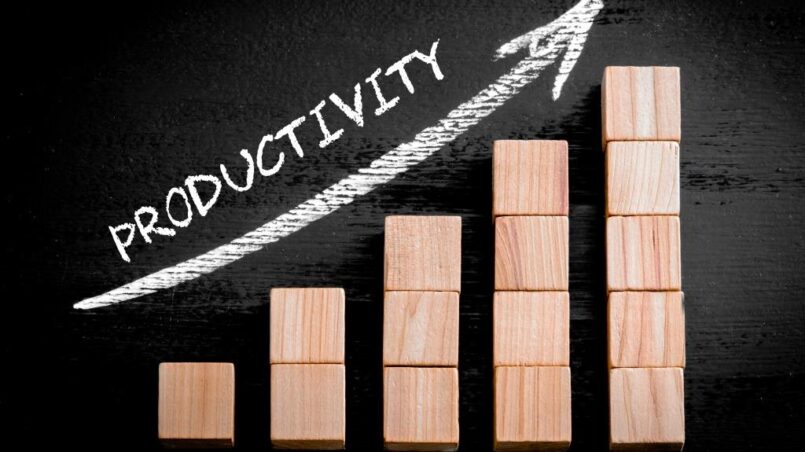Share this
Injuries can disrupt our daily livesFrom Crutches to Crushing It: Staying Productive While Injured and challenge our productivity. Adapting to a new reality requires flexibility and strategic planning. This article will guide you through staying productive while injured. We’ll cover practical tips on managing your workspace, leveraging technology, and maintaining your well-being. With the right approach, you can continue to achieve your goals and make the most of your situation. Read on to discover how to navigate this challenge effectively and keep your productivity on track.
Understanding Your Injury and Limitations
Assessing the Impact of Your Injury on Daily Activities
The first step in staying productive while injured is understanding how your injury affects your daily life. Take time to assess your physical limitations and how they might impact your work and personal activities. Consider factors such as:
- Mobility: Are you able to move around easily, or will you need to make adjustments to your workspace or routine?
- Pain Levels: How does your pain or discomfort affect your concentration and energy levels?
- Required Rest: How much rest or downtime is necessary for your recovery?
Document these factors to create a clear picture of your capabilities and constraints.
Setting Realistic Goals and Expectations
Once you understand the impact of your injury, set goals that are achievable given your current condition. Start by:
- Identifying Priorities: Focus on tasks that are most important and feasible. Break them down into smaller, manageable steps.
- Adjusting Deadlines: Modify your deadlines to accommodate your new pace. Communicate any changes with your team or clients.
- Celebrating Small Wins: Recognize and celebrate even minor accomplishments to stay motivated and track progress.
Setting realistic goals helps manage frustration and maintains a sense of achievement, even if you need to work at a reduced capacity.
Communicating Your Needs
Effective communication with your colleagues, supervisor, or clients is crucial. Be clear about:
- Your Limitations: Explain how your injury affects your ability to perform certain tasks.
- Alternative Solutions: Propose adjustments or alternative methods to complete your work.
- Progress Updates: Keep your team informed about your recovery progress and any changes in your work capacity.
Open and honest communication fosters understanding and collaboration, making it easier to manage your workload while injured.
Creating a Comfortable and Accessible Workspace
Adapting Your Workspace to Accommodate Your Injury
Creating a workspace that accommodates your injury From Crutches to Crushing It: Staying Productive While Injured can significantly impact your comfort and productivity. Consider the following adjustments:
- Ergonomic Furniture: Invest in a chair and desk that support your posture and reduce strain. For example, if you have a leg injury, ensure your chair allows you to sit with your leg elevated.
- Accessibility Modifications: Arrange your workspace so that essential items are within easy reach. Use tools like reachers or adjustable desks if mobility is limited.
- Proper Lighting: Ensure your workspace is well-lit to reduce eye strain and make it easier to perform tasks.
Make adjustments based on your specific needs to create a comfortable and efficient environment.
Implementing Ergonomic Adjustments and Accessibility Tips
Ergonomic and accessibility adjustments From Crutches to Crushing It: Staying Productive While Injured help you work more comfortably and efficiently. Here are some tips:
- Adjustable Desk: Use a desk that can be raised or lowered to match your seated or standing position. This is especially useful if you have a back injury or need to alternate between sitting and standing.
- Keyboard and Mouse Placement: Position your keyboard and mouse at a height that allows your arms to rest comfortably. Consider using ergonomic devices that reduce strain on your hands and wrists.
- Supportive Accessories: Utilize cushions or supports for your back, wrists, or feet. For instance, a lumbar support cushion can alleviate back pain, while a wrist rest can reduce strain from typing.
These adjustments help prevent further discomfort and enhance your productivity.
Organizing Your Work Area for Efficiency
A well-organized workspace From Crutches to Crushing It: Staying Productive While Injured can make your tasks easier to manage and reduce physical strain:
- Declutter: Keep your work area free from unnecessary items. This helps you move more easily and reduces distractions.
- Use Organizational Tools: Implement trays, bins, or file organizers to keep documents and supplies within reach. This minimizes the need to stretch or strain while reaching for items.
- Accessibility Tools: Depending on your injury, consider using voice recognition software or other assistive technologies to perform tasks more comfortably.
An organized workspace ensures that everything you need is easily accessible and helps maintain a smooth workflow.
Time Management Strategies for Injured Individuals
Prioritizing Tasks and Managing Time Effectively
Effective time management From Crutches to Crushing It: Staying Productive While Injured becomes even more crucial when you’re dealing with an injury. Follow these strategies to stay on top of your workload:
- Create a Task List: Start by listing all the tasks you need to complete. Break larger projects into smaller, manageable tasks to avoid feeling overwhelmed.
- Prioritize Tasks: Identify which tasks are most urgent or important. Use methods like the Eisenhower Matrix to categorize tasks by urgency and importance, focusing on what needs immediate attention.
- Set Realistic Timelines: Allocate specific time blocks for each task based on your energy levels and ability to focus. Be realistic about what you can accomplish in a given time frame.
By breaking tasks into manageable steps and prioritizing effectively, you can make steady progress without overexerting yourself.
Using Tools and Apps to Stay Organized
Leverage technology to enhance your productivity and keep track of your tasks:
- Task Management Apps: Utilize apps like Todoist, Trello, or Asana to organize and track your tasks. These tools can help you set deadlines, create reminders, and monitor progress.
- Calendar Apps: Use calendar apps like Google Calendar or Microsoft Outlook to schedule tasks, meetings, and breaks. Set reminders for important deadlines and appointments.
- Time Tracking Tools: Implement time tracking tools such as Toggl or Clockify to monitor how much time you spend on different tasks. This helps you adjust your schedule and improve efficiency.
These tools can help you stay organized and ensure you manage your time effectively despite physical limitations.
Implementing Time Blocks and Breaks
Incorporate time management techniques that accommodate your injury:
- Time Blocking: Divide your work into focused time blocks with set start and end times. For instance, work for 45 minutes and take a 15-minute break. Adjust the length of work blocks based on your comfort level.
- Scheduled Breaks: Regular breaks are essential to prevent fatigue and discomfort. Use breaks to stretch, rest, or perform any necessary exercises recommended by your healthcare provider.
Time blocking and taking regular breaks help maintain your productivity while managing the physical demands of working with an injury.
Setting Up a Routine
Establishing a consistent routine can enhance your productivity and overall well-being:
- Daily Schedule: Develop a daily schedule that aligns with your energy levels and pain management needs. Include time for work, breaks, and self-care activities.
- Flexibility: Be prepared to adjust your routine as needed. Some days might be more challenging than others, so allow for flexibility in your schedule.
A well-structured routine provides stability and helps you manage your workload effectively while accommodating your injury.
Conclusion
Navigating From Crutches to Crushing It: Staying Productive While Injured while dealing with an injury presents unique challenges, but with the right strategies, you can continue to achieve your goals and maintain your effectiveness. By understanding your limitations, adapting your workspace, and employing effective time management techniques, you can create a supportive environment that fosters both comfort and productivity. Remember to communicate openly with your team, prioritize self-care, and use technology to your advantage. Embrace these adjustments and strategies to turn a difficult situation into an opportunity for growth and continued success.
Frequently Asked Questions (FAQs)
- How can I assess the impact of my injury on my productivity?
To assess the impact of your injury, consider how it affects your mobility, pain levels, and required rest. Document these factors to understand your limitations and how they might influence your ability to perform tasks. This will help you set realistic goals and make necessary adjustments to your work routine.
- What are some essential adjustments I should make to my workspace?
Key adjustments include investing in ergonomic furniture, arranging your workspace for easy access to necessary items, and ensuring proper lighting. Depending on your injury, you might need to modify your chair height, use supportive accessories, or implement accessibility tools to make your workspace more comfortable.
- How can I manage my time effectively while injured?
Create a task list, prioritize tasks based on urgency and importance, and set realistic timelines. Use task management apps, calendar tools, and time tracking software to stay organized. Implement time blocks for focused work periods and take regular breaks to avoid overexertion.
- What tools and apps can help me stay productive?
Consider using task management apps like Todoist or Trello, calendar apps like Google Calendar, and time tracking tools like Toggl. These tools can help you organize tasks, schedule work, and monitor your time, making it easier to manage your workload despite your injury.
- How often should I take breaks when working with an injury?
Regular breaks are crucial to prevent fatigue and discomfort. Implement time blocks that include short breaks—such as working for 45 minutes and taking a 15-minute break. Adjust the length and frequency of breaks based on your comfort and recovery needs.
- How can I communicate my needs to my colleagues or supervisor effectively?
Be clear and honest about how your injury affects your work. Explain your limitations, propose alternative solutions, and keep your team updated on your progress. Open communication helps set expectations and fosters understanding and support.
- What should I include in my daily routine while injured?
Establish a daily schedule that aligns with your energy levels and recovery needs. Include time for work, breaks, and self-care activities. Be flexible and prepared to adjust your routine based on how you feel each day.
- How can technology assist with my productivity during recovery?
Technology can assist by offering tools for task management, scheduling, and communication. Use apps for organizing tasks, setting reminders, and tracking time. Additionally, consider voice recognition software or other assistive technologies to ease the burden on your physical capabilities.
- How do I balance work and self-care while injured?
Prioritize self-care by scheduling regular breaks, incorporating rest periods, and managing your workload to avoid overexertion. Use ergonomic adjustments and supportive accessories to enhance comfort. Balance work tasks with self-care activities to support both your physical and mental well-being.
- What should I do if my injury worsens or my productivity declines?
If your injury worsens, consult your healthcare provider for advice and adjust your work routine accordingly. Reevaluate your goals and workload, communicate with your team about any changes, and seek additional support if needed. Adjust your strategies as necessary to accommodate your evolving situation.


